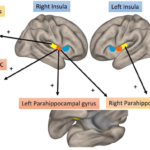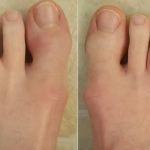Disruptive Thinking & the Future of PsA
Although the past 20 years have brought transformational advances in pathogenesis and therapeutics for both psoriasis and PsA, joint outcomes have consistently trailed those witnessed in the skin.51 The arrival of anti-TNF agents, followed by antibodies that target the IL-23/IL-17 axis, have radically improved our ability to treat psoriasis. Remarkably, a significant number of patients can now achieve total clearance of skin disease.52
However, this extraordinary degree of responses observed in the skin domain has not been attained in PsA, where up to half the patients do not experience clinically consequential synovio-entheseal improvement with blockade of TNF or IL-23/IL-17 pathways.41,53,54 Hence, and although the process is known to be reversible (i.e., via denervation or bone marrow transplantation), highly effective treatment strategies for PsA continue to remain unattainable for many.
Innovation (and perhaps even disruptive medical thinking) is of the essence—unraveling yet unidentified therapeutic targets, implementing combination therapy strategies with currently available modalities, as well as intervention tactics to halt PsA before it even becomes clinically evident.55,56
Fortunately, many of these initiatives have already launched and are actively being pursued. Prominent examples include such endeavors as the National Institutes of Health-Accelerating Medicines Partnership (AMP) Autoimmune and Immune Mediated (AIM) Diseases and the European Innovative Medicines Initiative (IMI), which integrate public-private partnerships to uncover new targets for diagnosis and therapeutics in psoriatic disease.57
These, combined with programs that tackle multi-therapy interventional approaches (for this multi-domain disease) and outright preventive strategies, promise to propel the field forward by studying the psoriasis to PsA continuum in an integrated and ever more detailed (both molecularly and phenotypically) manner.58,59
The hope, of course, is to better understand (and perhaps be able to interrupt) the biological features linking Miriam’s snowflakes and Fray Urraca’s hooked hands.
 Rebecca H. Haberman, MD, a recipient of the 2021 National Psoriasis Foundation Outstanding Young Investigator Award, is an instructor of medicine, Division of Rheumatology, New York University (NYU) Grossman School of Medicine and associate director of the NYU Langone Psoriatic Arthritis Center (NYU PAC).
Rebecca H. Haberman, MD, a recipient of the 2021 National Psoriasis Foundation Outstanding Young Investigator Award, is an instructor of medicine, Division of Rheumatology, New York University (NYU) Grossman School of Medicine and associate director of the NYU Langone Psoriatic Arthritis Center (NYU PAC).
 Jose U. Scher, MD, a recipient of the ACR Henry Kunkel Early Career Investigator Award, is the Steere-Abramson associate professor of medicine and the associate director of research and translational medicine, Division of Rheumatology, New York University (NYU) Grossman School of Medicine, and director of the NYU Langone Psoriatic Arthritis Center (NYU PAC) and Microbiome Center for Rheumatology and Autoimmunity (MiCRA).
Jose U. Scher, MD, a recipient of the ACR Henry Kunkel Early Career Investigator Award, is the Steere-Abramson associate professor of medicine and the associate director of research and translational medicine, Division of Rheumatology, New York University (NYU) Grossman School of Medicine, and director of the NYU Langone Psoriatic Arthritis Center (NYU PAC) and Microbiome Center for Rheumatology and Autoimmunity (MiCRA).


